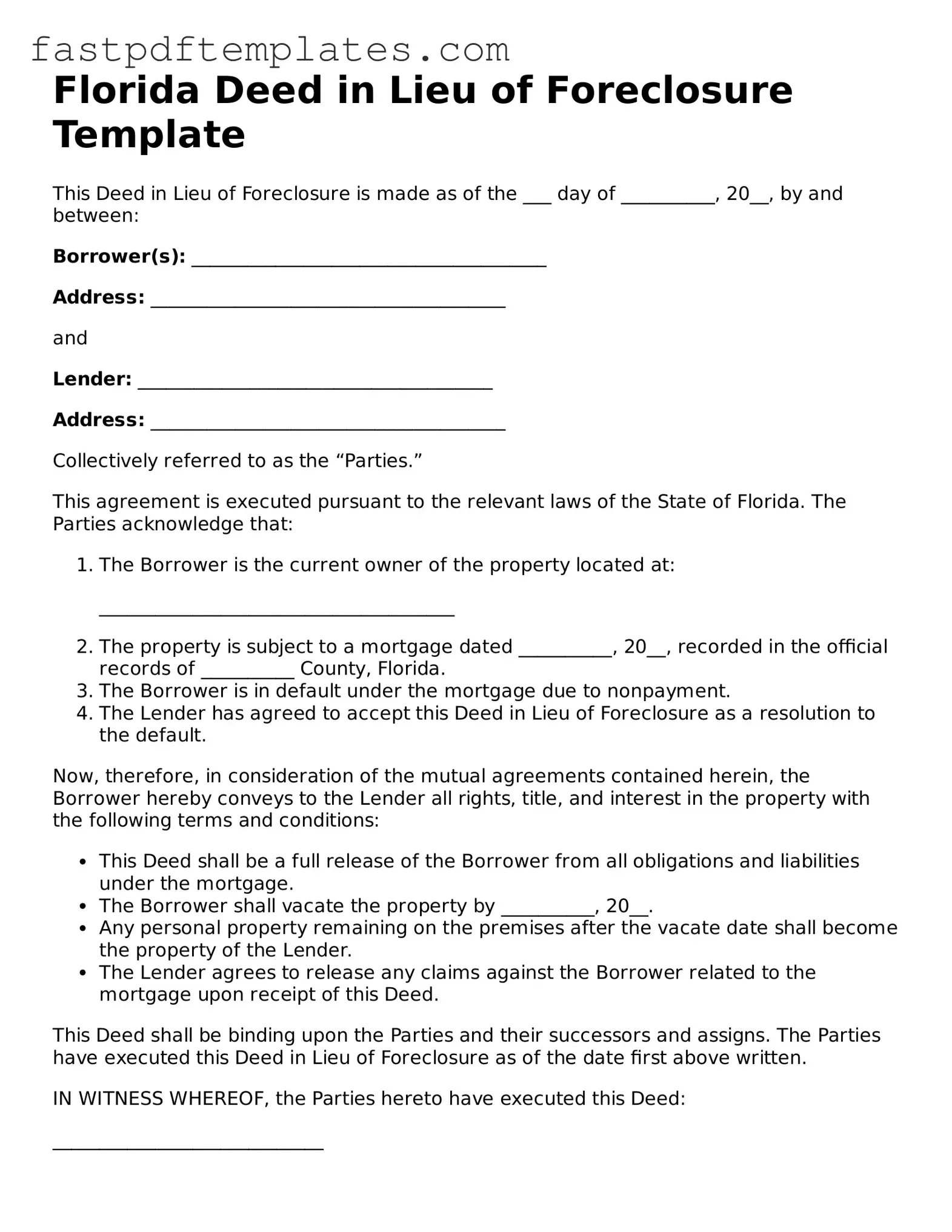Florida Deed in Lieu of Foreclosure Template
This Deed in Lieu of Foreclosure is made as of the ___ day of __________, 20__, by and between:
Borrower(s): ______________________________________
Address: ______________________________________
and
Lender: ______________________________________
Address: ______________________________________
Collectively referred to as the “Parties.”
This agreement is executed pursuant to the relevant laws of the State of Florida. The Parties acknowledge that:
- The Borrower is the current owner of the property located at:
______________________________________
- The property is subject to a mortgage dated __________, 20__, recorded in the official records of __________ County, Florida.
- The Borrower is in default under the mortgage due to nonpayment.
- The Lender has agreed to accept this Deed in Lieu of Foreclosure as a resolution to the default.
Now, therefore, in consideration of the mutual agreements contained herein, the Borrower hereby conveys to the Lender all rights, title, and interest in the property with the following terms and conditions:
- This Deed shall be a full release of the Borrower from all obligations and liabilities under the mortgage.
- The Borrower shall vacate the property by __________, 20__.
- Any personal property remaining on the premises after the vacate date shall become the property of the Lender.
- The Lender agrees to release any claims against the Borrower related to the mortgage upon receipt of this Deed.
This Deed shall be binding upon the Parties and their successors and assigns. The Parties have executed this Deed in Lieu of Foreclosure as of the date first above written.
IN WITNESS WHEREOF, the Parties hereto have executed this Deed:
_____________________________
Borrower Signature
Date: _______________________
_____________________________
Lender Signature
Date: _______________________
